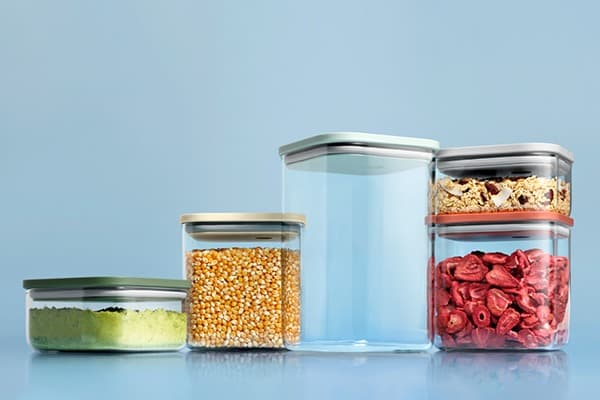Airtight containers are widely used in homes, offices, and commercial spaces because they keep items safe from air, moisture, and pests. They are perfect for extending the shelf life of many foods, organizing supplies, and protecting delicate materials. However, not everything is suited for airtight storage. In fact, some items can spoil faster, develop unwanted odors, or even pose safety risks if sealed without ventilation. Knowing what not to store in airtight containers helps you avoid these problems and ensures that your belongings remain fresh and safe.

1. Fresh Produce That Needs Airflow
Certain fruits and vegetables release gases or require ventilation to stay fresh. Storing them in airtight containers can trap moisture and accelerate spoilage.
-
Bananas, apples, and avocados release ethylene gas, which speeds up ripening. In a sealed container, this gas builds up and causes overripening or rotting.
-
Onions, garlic, and potatoes need air circulation. Sealing them in airtight containers often results in mold, sprouting, or a foul smell.
Instead, these foods should be stored in mesh bags, baskets, or ventilated bins to allow airflow.
2. Bread and Baked Goods
While airtight containers keep cookies or crackers crispy, they are not ideal for bread and some baked goods. Bread stored in airtight containers can trap humidity, encouraging mold growth within days. The same applies to pastries with moist fillings or frostings.
A better option is to store bread in a paper bag, bread box, or loosely covered container that balances moisture retention with airflow. Freezing is also a safe method for long-term storage.
3. Hot or Warm Foods
Placing freshly cooked, warm food directly into an airtight container is not recommended. As the food cools, steam condenses inside the container, creating excess moisture that can encourage bacterial growth. Additionally, hot food can warp some types of plastic containers or weaken the seals.
Always allow food to cool to room temperature before sealing it in an airtight container.
4. Items That Release Gas
Foods and materials that naturally release gases should not be sealed tightly. Examples include:
-
Fermenting foods like kimchi, sauerkraut, or homemade pickles. These need vented jars or fermentation crocks to release carbon dioxide safely. Sealing them in airtight containers could cause pressure buildup or leaks.
-
Freshly roasted coffee beans release carbon dioxide for several days after roasting. Storing them in completely airtight containers can lead to stale flavor or container expansion. Specialized coffee storage canisters with one-way valves are a better choice.
5. Certain Cheeses
Soft and semi-soft cheeses, such as brie or mozzarella, often require some breathing room. When sealed in airtight containers, moisture can accumulate, leading to sliminess and mold. Instead, wrapping them in wax paper or cheese paper before placing them in a loosely covered container keeps them fresher for longer.
Hard cheeses like cheddar or parmesan, however, can be stored in airtight containers without issues.
6. Damp Items
Moisture is the enemy of airtight storage. Placing damp clothes, towels, or papers inside a sealed container can trap humidity, encouraging mold and mildew growth. This can also produce strong odors that are difficult to remove.
Always ensure that items are completely dry before sealing them. For long-term storage, consider adding silica gel packets to absorb residual moisture.
7. Flammable or Hazardous Materials
It might seem convenient to use airtight containers for storing chemicals, solvents, or flammable materials, but it is unsafe. Sealed environments can trap vapors, creating fire or explosion hazards. Materials such as gasoline, paint thinner, or certain cleaning agents should be stored in containers specifically designed for hazardous substances.
Conclusion
Airtight containers are excellent for keeping many foods and household items safe from air and moisture, but they are not universally suitable. Fresh produce, bread, hot food, fermenting items, certain cheeses, damp belongings, and hazardous materials are all better stored in alternative ways. By understanding these limitations, you can make smarter storage decisions that prevent spoilage, maintain freshness, and ensure safety.
In short, airtight containers work best when used thoughtfully—protecting dry goods, leftovers, and delicate items—while avoiding situations where ventilation or specialized storage methods are necessary.
Post time: 09-18-2025



